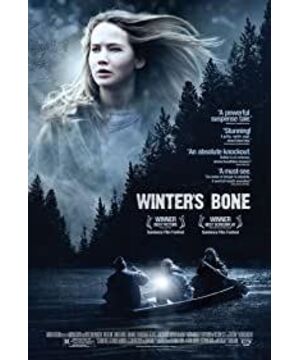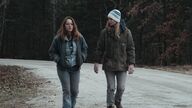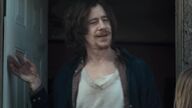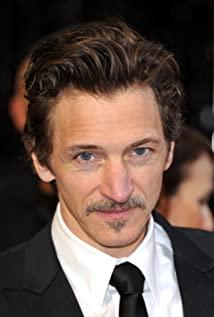The bones of winter
Hemingway's "iceberg" theory of novels, a good novel that people can see is the part of the iceberg exposed, advocating a kind of simple temperance, and leaving people unlimited room for reverie.
The bone motif of winter is about searching, searching for fathers, searching for the truth, searching for the support of life. In the process of searching,
from the perspective of a seventeen-year-old girl, Dolly, through the process of searching, it shows a society full of warmth. , Sometimes it is indifference, not so much indifference, as it is a kind of protection.
The greater significance of the film is to show a strong life, as Dolly said to her younger brother; do not ask others to give you, love does not give.
The film uses the girl’s livelihood to find the drug dealer’s father as a structural clue. The girl’s neighbors, father’s friends, the girl’s relatives teardrops, the biggest drug dealer leader, and the conscription police appear in turn. Behind this clue are bits and pieces about the girl’s father. , The girl’s course of action is the exposed iceberg, and the underwater iceberg is the cold and warm adult world where his father lives.
The realist tone of the whole film is that two children play games at the beginning of the film. Dolly is chopping firewood. Many life details presented from an objective perspective form the foundation of the film. In the American countryside, the difficult survival of the film is the background of the whole film. The dilemma faced by a seventeen-year-old girl began to unfold within a few minutes; their only house was taken away immediately, and the whereabouts of her father was unknown.
The beginning set the realist tone of the film and explained the dilemma, a story of finding a drug-trafficking father, and a strong girl, just like the bones of the title winter.
The gradual search process, as well as the evasive attitude of everyone, increased the difficulty of Dolly's search, and the danger and tension also increased. The creation of this tension uses the accumulation of the search process, which seems to be fruitless. But from an outsider, everyone's indifference to her was more of a kind of protection, and she began to get a roll of crumpled money from teardrops, and the drug dealer boss gave her a glass of water and a warning.
The change of the plot changed from actively seeking to being found. The drug dealer dealt with her and kept advising her. With the help of Teardrop and others, Dolly slowly saw the truth in the adult world.
All plots are designed around Dolly's encounter, and Dolly's encounter revolves around his father. Her father never appeared, and the explanation of the cause of death was more like a riddle.
The design of the image of the father is more like a goal, like the money box in the commercial film, and the treasure in the adventure film, only flashed in the photo. The image of the father is formed by the underwater part of the iceberg, which is invisible but imaginable.
This narrative probably has the following reasons, in order to better maintain Dolly's perspective and encounters, and to maintain the unity of perspective. Also for the sake of visibility, such as the wife who appeared last in the movie Paris, Texas, and the criminal who appeared last in the Seven Deadly Sins.
Take Zhang Yimou's early Qiu Ju litigation, none of them can be compared. The overall structure of the play has similarities, and the characters' perseverance and personality also have similarities, such as Wei Minzhi and Qiu Ju.
Hunting, slaughtering animals, chopping wood, how to hunt, deserted roads, cold lake water, trees with all leaves, and snow. These realistic scenes are interspersed in the film. These are more to show a state of existence and let the viewers Recognition can be integrated into the plight of the girl. The realistic life element is an indispensable element of the film, the basis of the entire film, and the basis of the documentary style narrative strategy. Unlike traditional gangster movies such as The Godfather, which cuts into society from a frontal perspective, the realistic female perspective makes this movie unique.
Unconventional perspectives and unconventional narratives try to keep the entire film at a distance from the audience. Whenever there may be strong drama conflicts or chase scenes, including the last teardrop saying I know who did it, to revenge The scenes have been hidden since. Let the narrative be daily, let the viewer think rationally, and let the audience's sober conscious thinking to judge the thoughts conveyed by the film, not to give, but to let you take it yourself. As for what you get, it is different. This should be a relatively advanced thinking activity.
This unique perspective made this movie, and it was part of the commentary.
This is a deep, euphemistic, and quiet film. The heart-wrenching emotion in the movie is a kind of unremarkable way that slowly flows into the depths of our hearts.
- "The New York Times"
examines family relationships through the child's perspective. In this deep and steady film, this perspective and viewpoint is awe-inspiring.
- "ELLE"
depicts a hard society and a dark society, and expressing innocent emotions is a masterpiece of writer Daniel Woodrell, and director Debra Grannick is also very good at it.
-
At the end of the "Variety Show" film, once again analogy with Zhang Yimou's film, the chicken undoubtedly represents the hope of life, and life has returned to peace.
View more about Winter's Bone reviews










